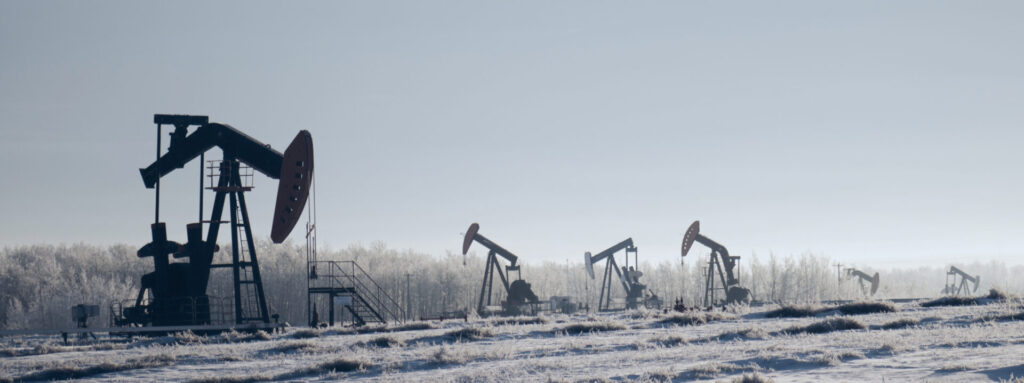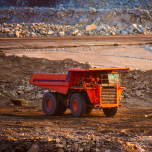Enhanced geothermal systems deliver engineered, always-on heat and power by creating controlled heat-exchange zones in hot, low-permeability rock. Instead of depending on rare natural hydrothermal reservoirs, EGS establishes fluid pathways in hot formations to unlock dry rock geothermal energy at scale. As grids add variable renewables, enhanced geothermal systems provide firm, dispatchable capacity with a small land footprint and minimal emissions. In this article, we focus on how these systems work, where deployment is advancing, and how control strategies, operational analytics, and data integration improve performance and bankability. This guide answers the core question—what are enhanced geothermal systems—while outlining technology fundamentals, benefits, challenges, and the trajectory of research and commercialization.
What Are Enhanced Geothermal Systems?
Enhanced geothermal systems are engineered reservoirs developed where natural permeability and fluid are insufficient for conventional geothermal. Rather than relying on existing hot water in permeable formations, developers drill geothermal energy wells and use controlled stimulation to create or improve flow connectivity in hot rock. Injected fluid absorbs heat and is produced to surface for electricity generation or direct heat, then re-injected to maintain pressure and sustain circulation. For readers asking what are enhanced geothermal systems, they are the pathway to extract dry rock geothermal energy in regions lacking natural hydrothermal resources.
This approach differs from traditional projects that tap naturally permeable hydrothermal fields typically associated with volcanic or tectonic settings. By deliberately enhancing permeability in deep, crystalline rock, EGS broadens geothermal potential to areas where sufficient temperature is present at accessible depths, but native fluid flow is limited. In practice, multiple geothermal energy wells—often one or more injectors and producers—intersect a stimulated zone, forming a closed-loop circulation system that preserves water resources and stabilizes reservoir pressure.
A representative configuration includes injection and production wells, a stimulated reservoir with enhanced permeability, and surface facilities for power or heat conversion. Continuous monitoring underpins performance: downhole pressure and temperature, microseismic arrays, and supervisory control systems inform real-time adjustments.
EGS supports multiple conversion pathways. At moderate temperatures, binary cycle plants transfer heat to a secondary working fluid with a lower boiling point, driving a turbine without flashing the produced fluid. Higher temperatures may enable flash steam configurations. Beyond power, enhanced geothermal systems can supply district heating, industrial process heat, or combined heat and power. The engineered nature of EGS allows tuning reservoir characteristics for stability, efficiency, and long-term sustainability—core attributes for dry rock geothermal energy development.
How Enhanced Geothermal Systems Work
Project development starts with subsurface assessment: temperature-at-depth mapping, stress regime evaluation, and geomechanically characterization to select a target zone. Operators then drill geothermal energy wells—typically an injector and one or more producers—with deviated or multilateral designs used to maximize contact with the stimulated volume and improve sweep efficiency.
Permeability is established through controlled stimulation that opens microfractures and connects natural discontinuities to enable fluid flow. Unlike hydrocarbon-focused fracturing, EGS targets conductive connectivity rather than long, propped fractures. Injection rates and pressures are managed to achieve circulation while mitigating induced seismicity. Modeling monitoring, fiber-optic sensing, and stress modelling guide operational decisions, enabling dynamic adjustment to injection profiles and shut-in strategies.
Once connectivity is achieved, water circulates through the hot rock, absorbs heat, and returns to surface via production wells. Surface systems extract thermal energy for electricity or direct use, and cooled fluid is re-injected to close the loop, preserve pressure, and reduce water consumption. This closed-loop strategy also limits geochemical interactions and supports stable long-term operation across networks of geothermal energy wells.
Conversion technology depends on temperature and chemistry. Binary cycle plants dominate mid-temperature applications because they manage varied geochemistry without boiling the produced fluid. At higher temperatures, flash configurations may be appropriate. Operators deploy anti-scaling and corrosion control to protect heat exchangers, pumps, and wells. Real-time monitoring sustains permeability by balancing injections, steering flow distribution, and intervening early to address scale or fines migration.
Induced seismicity management is integral to enhanced geothermal systems. Operators use traffic-light protocols informed by microseismic data, regional fault mapping, and stress analysis to maintain safe operations.
Long-term performance depends on maintaining permeability and balancing heat extraction with thermal recharge. Teams track breakthrough curves, temperature decline, pressure behavior, and chemical signatures to infer flow-path evolution. Adaptive operation—varying injection volumes, cycling wells, or redirecting flows sustains output. When needed, targeted re-stimulation or well interventions restore conductivity. Digital models and sensor data enable predictive control strategies that keep dry rock geothermal energy production steady over the life of the field.
Benefits of Enhanced Geothermal Systems
EGS provides firm, clean capacity that is independent of weather, delivering high-capacity factors and round-the-clock availability. Small surface footprints and the absence of combustion reduce air pollution and greenhouse gas emissions. Closed-loop operation limits water usage and surface discharge, and continuous monitoring supports responsible seismic risk management. With careful sitting and rigorous compliance, enhanced geothermal systems meet stringent environmental standards while expanding access to dry rock geothermal energy.
Grid reliability and services are core advantages. EGS plants offer frequency regulation, voltage support, and controlled ramping. In systems with high shares of wind and solar, enhanced geothermal systems stabilize frequency, support inertia, and reduce reliance on fossil fuels. Pairing with thermal storage or flexible power cycles enables load following and peak shaving.
Resource accessibility distinguishes EGS. By targeting ubiquitous heat rather than rare hydrothermal reservoirs, regions without volcanic activity can develop dependable baseload capacity. Modular expansion—adding wells, enlarging stimulated zones, and upgrading surface systems—allows scaling without significant land impact. This engineered approach strengthens energy security while creating a durable platform for dry rock geothermal energy development.
EGS supports workforce transition and economic growth. Projects require skills spanning drilling, geomechanics, reservoir engineering, plant operations, sensing, and data science. Early projects create local jobs and catalyze advanced manufacturing for turbines, heat exchangers, and downhole tools. Overlap with oil and gas services provide clear pathways for talent transition into clean energy roles.
Multi-use applications amplify value. Enhanced geothermal systems can supply combined heat and power for industrial clusters, district heating, and process heat for sectors like food, chemicals, and pulp and paper. Waste heat can support desalination or low-temperature processes. By tuning reservoir and surface operations, operators optimize both electricity and heat delivery through coordinated control of geothermal energy wells and plant systems.
Challenges and Considerations
Permitting reflects subsurface complexity. Projects must demonstrate well integrity, manage water resources, and adhere to environmental protections. Induced seismicity requires transparent risk protocols, active monitoring, and community engagement. Coordination across agencies can influence timelines, so structured permitting strategies remain essential for execution.
Technology advancement is central to cost reduction and reliability. Drilling in hard, high-temperature formations is capital-intensive. Improvements in bits, mud systems, high-temperature materials, and automation compress costs and schedules. Better subsurface characterization—from fiber-optic sensing to integrated geophysics—improves stimulation design. Machine learning applied to flow and seismic data refines injection strategies, while real-time controls sustain permeability and reduce scaling.
Materials and operations must endure harsh conditions. Elevated temperature, pressure, and corrosive fluids influence casing, cement, completion hardware, and surface equipment selection. Mineral precipitation—silica, calcite, iron sulfide—can impede flow and heat transfer. Operators deploy compatible materials, chemical treatment, filtration, and proactive inspection to manage these risks. Thermal-mechanical cycling demands robust engineering to protect reservoir integrity and equipment life.
Seismic risk management depends on precise monitoring and adaptive operation. Stimulation and ongoing injections alter local stress, potentially triggering events. Operators define operational thresholds based on real-time microseismic data, velocity models, and fault mapping, then balance injections to sustain flow without elevating risk. Integrated data and model-based control are critical for stable, predictable performance from enhanced geothermal systems.
Cost and bankability are ongoing considerations. Upfront investment is significant, and returns depend on drilling success, reservoir stability, and long-term offtake. Learning curves, repeatable stimulation methods, and performance data from pilots reduce perceived risk. Phased development, clear measurement and verification, and robust predictive analytics support investor confidence. As more projects demonstrate reliability, standardization shortens cycles and improves financeability.
Current Research and Development
R&D spans geomechanics, drilling, stimulation, power conversion, and operations. Demonstrations across varied geologies test how different stress regimes and rock types respond to stimulation and sustained circulation. Research wells provide high-resolution temperature profiles, fracture characterization, and fluid chemistry to refine models and validate digital twins—key assets for planning dry rock geothermal energy projects and coordinating geothermal energy wells.
Public–private collaboration accelerates progress. Government programs fund drilling campaigns, measurement efforts, and open data resources. Industry contributes engineering, equipment, and operational expertise to translating findings into practice. Universities advance rock mechanics, geochemistry, and thermal systems science. Shared test sites, consortia, and standardized protocols improve comparability, reduce uncertainty, and speed deployment.
Conversion advances target higher efficiency. Improved binary cycles increase heat recovery from mid-temperature resources; supercritical concepts aim for higher power density. Directional drilling and precision well placement enhance reservoir geometry and sweep efficiency. Digital twins calibrated with real-time data support scenario planning and optimization, predicting scale formation, pressure response, and maintenance needs. With better sensing, smarter control, and resilient materials, capacity factors rise and levelized costs decline across enhanced geothermal systems.
Policy and markets increasingly value firm renewable capacity. Long-duration clean power contracts, capacity market eligibility, and grid planning that recognizes reliability and inertia contributions provide revenue certainty. Community engagement frameworks and environmental monitoring strengthen public trust, improving project viability.
The Future of Enhanced Geothermal Systems
Broader deployment is accelerating as drilling improves, costs fall, and policy prioritizes firm clean power. Many regions hold deep heat suitable for EGS even without natural hydrothermal reservoirs. Modular build-outs—adding geothermal energy wells, expanding stimulated zones, and incrementally upgrading surface systems—allow capacity to grow alongside operational learning.
Integration with other renewables enhances system value. Enhanced geothermal systems deliver continuous output that complements wind and solar, reducing storage needs and curtailment. Pairing with thermal storage or flexible cycles supports load-following and peak shaving. Sector coupling—using geothermal heat for industry and district heating—extends decarbonization beyond electricity. Grid services, including frequency regulation, voltage support, and inertia, position EGS as a cornerstone of reliable clean systems.
Over time, EGS improves energy security, stabilizes wholesale prices, and supports local economies. Firm renewable capacity reduces dependence on gas and imports, while processing heat enables emissions reductions in hard-to-bade sectors. Workforce development leverages existing drilling and plant operations skills. As operational datasets expand, insurers and investors gain confidence, improving access to finance for dry rock geothermal energy projects.
Strategic planning is vital. Resource mapping should prioritize temperature, stress, lithology, and transmission access. Site selection must consider water management, geochemical risk, seismicity, community engagement, and grid integration. Cross-sector collaboration, especially with drilling and materials suppliers, accelerates readiness. With sustained innovation and prudent regulation, enhanced geothermal systems can scale from pilots to mainstream infrastructure.
Frequently Asked Questions
What is a drawback of using enhanced geothermal systems? The main challenge is high upfront cost coupled with technical complexity. Drilling hard, high-temperature formations and establishing stable permeability require specialized equipment and expertise, impacting timelines and capital outlay. Operators must manage induced seismicity, corrosion, and mineral scaling, which demands robust sensing and adaptive control. These issues are being addressed through improved drilling technology, materials selection, stimulation design, and data-driven reservoir management.
What is the difference between advanced and enhanced geothermal systems? Enhanced geothermal systems specifically engineer permeability in hot rock to enable circulation and heat extraction where natural resources are insufficient. Advanced geothermal systems is a broader category that includes EGS alongside closed-loop or deep coaxial designs that do not rely on fracture-based flow, supercritical concepts, and advanced power cycles. In short, EGS is a subset of advanced approaches aimed at unlocking dry rock geothermal energy.
Where are enhanced geothermal systems being developed? EGS pilots and early commercial projects are progressing in regions with suitable temperatures and crystalline basement rocks, expanding beyond traditional geothermal provinces. Viability depends on temperature at depth, stress fields, rock properties, water management, regulatory frameworks, and grid proximity. Active efforts span parts of North America, Europe, Asia–Pacific, and other regions where deep hot rock can be reached with geothermal energy wells. As tools and methods improve, viable sites will broaden. For stakeholders asking what are enhanced geothermal systems and where they are headed, the trajectory points to wider adoption as costs decline and performance data accumulates.









